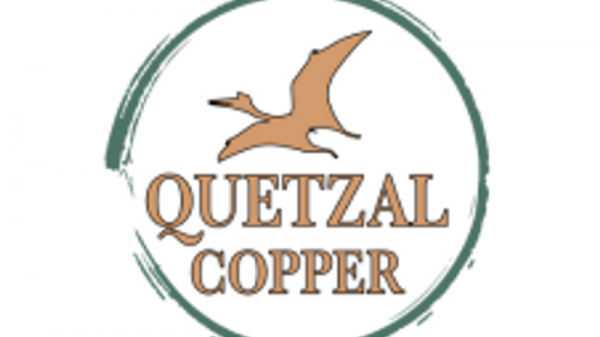The Biden administration on Thursday finalized a highly anticipated suite of rules to cut hazardous, planet-warming pollution generated by power plants in one of its most significant environment and climate actions to-date.
The Environmental Protection Agency’s new rules will compel coal and new natural gas power plants to either cut or capture 90% of their climate pollution by 2032. The rules are expected to reduce the carbon dioxide emissions from the sector by 75% compared to its peak in 2005.
The agency also announced tougher rules for the neurotoxin mercury emitted from their smokestacks and will require safer disposal of toxic wastewater and coal ash, which are byproducts of making electricity.
“By finalizing these standards on the same day, we are ensuring that the power sector has the information needed to prepare for the future with confidence,” EPA administrator Michael S. Regan told reporters. “These are the folks who keep the lights on and power our country forward. At the same time, the power sector is also a major contributor to the pollution that drives climate change and threatens public health.”
Along with the rollout of several other major rules in recent months, Thursday’s actions are more signs President Joe Biden is trying to cement his climate legacy ahead of the 2024 election and is vying for the votes of climate-conscious young people in November. His Republican opponent, former President Donald Trump, spent his presidency rolling back more than 100 environmental and climate rules, including the power plant rules Biden strengthened Thursday.
The EPA estimated the power plant rules will prevent nearly 1.4 billion metric tons of planet-warming pollution from entering the atmosphere through the year 2047 – equivalent to taking 330 million gas cars off the road for a year.
Related article Can this ocean-based carbon plant help save the world? Some scientists are raising red flags
After a significant court challenge to Obama-era rules prevailed at the Supreme Court in 2022, the new regulations give power generators options to choose how they meet pollution requirements. And the EPA announced in February it would delay its rule-making process for carbon emissions from existing gas plants, which had initially been covered under the agency’s proposal last year.
A senior administration official said the EPA was “really confident” it had “carefully crafted” the final rules within the confines of the law. But some industry stakeholders said it was just the opposite.
“The path outlined by the EPA today is unlawful, unrealistic and unachievable,” National Rural Electric Cooperative Association CEO Jim Matheson said in a statement, arguing the actions disregard recent Supreme Court rulings.
“There will be lawsuits,” he said.
What’s in the climate rules
Biden has made combatting the climate crisis a bigger priority than any other president in history, presiding over the passage of the Inflation Reduction Act in 2022, the nation’s largest-ever climate investment. But while the IRA contained billions in clean energy tax subsidies – a boatload of carrots for power companies to clean up their pollution – the EPA rules serve as a stick.
EPA’s pollution rules are less restrictive than the Obama-era Clean Power Plan, which was challenged and struck down by the Supreme Court in 2022.
Under the rules, utilities can retrofit existing coal or new gas-fired power plants with equipment to capture and store carbon pollution – the method the EPA recommends as the “best system of emissions reduction,” because it is proven and cost-effective.
Related article Global carbon pollution hits record high even as renewables surge
Companies could also choose to retire fossil fuel plants and shift to less expensive and cleaner sources of energy like wind and solar.
“If they choose to retire a plant instead of retrofitting it, that’s their choice,” Doniger said. “There’ll be a lot of charges that EPA is mandating this and mandating that, but this has been designed to follow the Supreme Court’s guidance.”
The EPA also strengthened the final rules from its original proposal, moving up the retirement deadline for existing coal plants that refuse to outfit with carbon capture, and covering more new natural gas plants than it had originally proposed.
Related card The world dumps 2,000 truckloads of plastic into the ocean each year. Here’s where a lot of it ends up
Some power generators are unconvinced carbon capture will be the best method to meet the EPA’s requirements. The trade group for utilities, Edison Electric Institute, said in a statement it was concerned about the lack of existing pipes and wells to transport and store the captured carbon. The technology “is not yet ready for full-scale, economy-wide deployment, nor is there sufficient time to permit, finance, and build the CCS infrastructure needed for compliance by 2032,” EEI president and CEO Dan Brouillette said in a statement.
Harmful mercury and coal ash
The EPA also finalized its strongest-ever standards to cut mercury pollution and harmful particulate matter from coal-fired power plants, including from lignite coal plants, by up to 70%. Mercury is a potent neurotoxin, meaning it is poisonous to the human body and can irreversibly damage the nervous system, kidneys, liver, lungs, digestive system and immune system.
Mercury released from power plants may hurt public health in two major ways. If people breathe in the vapor, which is odorless and colorless, it can hurt their lungs, brain and kidneys and can get into their bloodstream. Mercury vapor from coal plants can also travel long distances and fall to the ground in the form of rain, snow and sleet, contaminating land and water and poisoning fish.
Related article Extreme temperatures are tied to more than half a million stroke deaths a year. With climate change, expect more
In addition to the new standards, power plants will have to install continuous monitoring systems looking for emissions of mercury and other toxic pollutants like arsenic, chromium, cobalt, nickel.
“This is a really important step,” said Paul Billings, national senior vice president for public policy with the American Lung Association, calling the pollutants “really bad for human health.”
In addition, EPA’s rules regulate three types of wastewater generated at coal-fired power plants and address water stored in coal ash ponds – reducing this form of pollution by close to 600 million pounds per year.
Finally, EPA is closing loopholes for toxic coal ash – making sure power plants must safely dispose of coal ash previously dumped at unregulated landfills.
“Any one of [these rules] individually is a monumental achievement,” said Holly Bender, senior director for energy campaigns at the Sierra Club. “Collectively, these rules send a very strong signal to the electric power industry that it is no longer okay to contribute to these significant public health harms.”







































